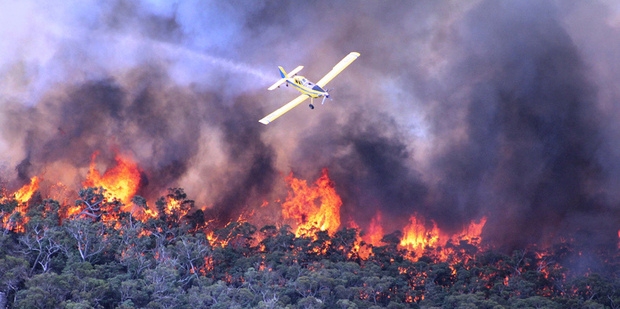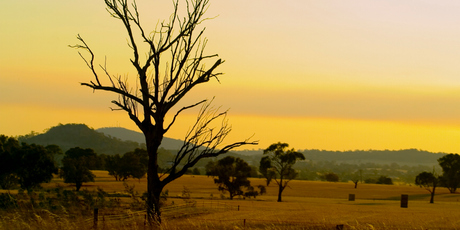New Zealanders---Stop worrying about being treated as second class citizens in Australia: I suspect the boot will be on the other foot soon and we can 'choose' who we let in! Seriously--do you really want to live in the 'big lucky drying country? Come home to the little best country in the world and we can send the hobbits to Aussie---cause they can live underground!
Australia still the 'burning, drying' continent
By Jamie Morton
1:49 PM Tuesday Mar 4, 2014

Most of the warming has happened within the last 60 years.
The worrying trend is laid out in a new report released today by Australia's national science agency, Commonwealth Scientific and Industrial Research Organisation (CSIRO), and its Bureau of Meteorology.
Bureau chief executive Dr Rob Vertessy said temperatures across Australia were, on average, almost 1C warmer than they were a century ago, with most of the warming having occurred since 1950.
"Australia's mean temperature has warmed by 0.9C since 1910," Dr Vertessy said.
Seven of the 10 warmest years on record in Australia have occurred since 1998.
"When we compare the past 15 years to the period 1951 to 1980, we find that the frequency of very warm months has increased five-fold and the frequency of very cool months has decreased by around a third."
The duration, frequency and intensity of heatwaves have increased across large parts of Australia since 1950, he said.
Extreme fire weather risk had increased, and the fire season has lengthened across large parts of Australia since the 1970s.
``We have also seen a general trend of declining autumn and winter rainfall, particularly in southwestern and southeastern Australia, while heavy rainfall events are projected to increase.
"Australian average annual rainfall has increased slightly, largely due to increases in spring and summer rainfall, most markedly in northwestern Australia."
CSIRO chief executive Dr Megan Clark said Australia has warmed in every state and territory and in every season.
"Australia has one of the most variable climates in the world,'' she said.
"Against this backdrop, across the decades, we're continuing to see increasing temperatures, warmer oceans, changes to when and where rain falls and higher sea levels."
"The sea-surface temperatures have warmed by 0.9C since 1900 and greenhouse gas concentrations continue to rise."

The duration and intensity of heatwaves and days above 40C continued to increase, and temperatures were projected to increase with more hot days and fewer cold days, he said.
With continued drying in parts of the southern half of Australia, droughts were projected to increase.
"With such trends I would expect to see a reverse in migration across the Tasman, with increasing numbers of Australians coming to New Zealand," he said.
"This is as the climate of continental Australia becomes very harsh."
Read more by Jamie Morton
